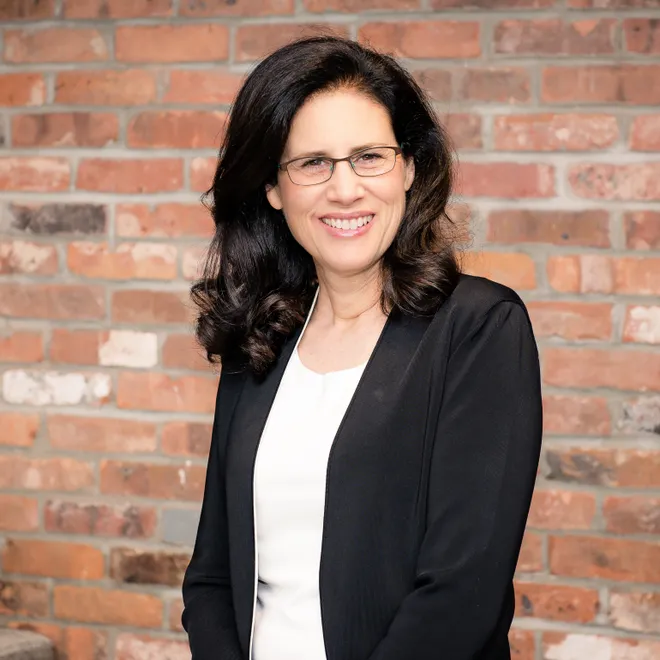Fatherhood premium, motherhood penalty? What Nobel Prize economics winner's research shows
Sapna Arvind had always dreamed of having a big career in finance.
“My dad, when I was a child, would say, ‘I wanna see you on CNBC,’ "she says. “So I did my undergrad in finance at New York University with those words ringing in my ears.”
Arvind embarked on a career in asset management in New York City after getting an MBA in finance from MIT Sloan School of Management in Cambridge, Massachusetts. By her mid-30s, she was also a mother of two children under the age of 10.
While she’d powered through the early years as a young mother and a professional woman, by the time her younger one was ready for kindergarten, she didn’t want to do it anymore – commuting back to her home in the suburbs at 8 p.m. just as the kids were getting ready for bed.
She decided to quit her job. Her husband, an investment banker, would be the sole breadwinner while she’d be the primary “on-call” parent.

It’s a decision scores of college-educated women have made over the years and which, in part, explains why the gender earnings gap is wider among college-educated women compared with those without a college degree.
In 2022, for example, women with at least a bachelor’s degree earned 79% as much as men who were college graduates, while women who were high school graduates earned 81% as much as men with the same level of education, according to the Pew Research Center.
That is also a topic Harvard professor Claudia Goldin, 77, who received a Nobel Prize in economics for her groundbreaking work on women in the labor market on Monday, has spent decades studying.
After collecting and analyzing 200 years of U.S. historical data to demonstrate how and why gender differences in earnings and employment rates have changed over time, she found that while historically, the wage gap could be explained through differences in education and occupational choices, recently, the differences among men and women in the same profession widens after the birth of the first child.
Goldin’s research also finds this trend: Differences in both pay and the ability to stay in the workforce reflect differences in the division of unpaid caregiving responsibilities between heterosexual couples.
Fatherhood premium, motherhood penalty
Goldin's recent research has also found that while mothers make less than non-mothers because of the reduced number of hours they work, fathers make more than non-fathers over the course of their careers.
“Quite frankly, it's the most disturbing part of this," Goldin told USA TODAY in a phone interview Tuesday, a day after she won the Nobel prize. "Why is it that fathers are doing better (than non-fathers), even though they have kids? Why is the fatherhood premium growing over time?" she asks, adding that "the price of being a woman stays constant (due to social norms around gender), which is also somewhat disturbing.”
Goldin says women with children enable men with children to achieve more.
“Men are able to step forward because women step backward. It's not simply taking the shirts to the dry cleaner that women do, they are boosting their ability to do work,” Goldin says. “And therefore, if you are by yourself, you don't have the ability to have that help mate.”
The other explanation is the American notion of masculinity that places a self-imposed pressure to achieve more when you are a father.
“This internal sense that fathers have, that they really have to run fast because they are breadwinners,” she says.
“Greedy” work and flexible work
When it comes to college-educated women, high-salary jobs with long, inflexible hours exacerbate the gender pay gap. When women take on “greedy” work, which pays disproportionately more when they work a greater number of hours or have less control over those hours, they tend not to last long because they opt out to raise families.
The pandemic, Goldin says had decreased the cost of flexibility as firms and workers have learned to use technologies that enable remote meetings.
“One of the big hurdles is business travel," she says. "It’s an enormous barrier to individuals with care responsibilities. But “if that job now changed to, you don't have to travel to Tokyo, you have to Zoom with Tokyo clients every other weekend, you can do it.”
Making greedy jobs more flexible would allow more women to take them, Goldin says.
When Jane Veron moved to the suburbs from New York City with two preschoolers, she worked for a Fortune 500 company that had offered her part-time work during her early days of motherhood.
“What part-time meant was partial pay for nearly full-time work but I made the deal because it allowed me to go to the office three rather than five days per week,” says the Yale graduate and Harvard MBA.
Her hard work didn’t go unnoticed—she was offered a promotion, but the catch was that she needed to be physically present five days per week.
“Despite the fact that I had excelled while working ‘part-time’ my hiring boss required face time, being physically present every day of the week, and was not sympathetic to the demands of motherhood, “ Veron says. “She said that juggling family concerns was not relevant.”
She decided to quit her job.
If she’d had flexibility, things would have been very different.
“Without a doubt, I would have stayed in the workforce,” she says. “I did not want to quit my job.”
Her life as a Scarsdale mom, one of the most expensive zip codes in the country, landed her in familiar company: stay-at-home moms with degrees from prestigious universities and experience in the corporate world, including at white-shoe law firms, exclusive management consultancies and Fortune 500 companies.
Veron established The Acceleration Project, a nonprofit consulting firm in 2012 to help small businesses that were dealing with the aftermath of the economic recession by channeling the talents of these “opt-out” moms with backgrounds in everything from law, business marketing and finance.
The nonprofit now has more than 200 volunteers who work part-time or full-time with the organization.
"While TAP started with moms who left their fast-paced careers, more of our consultants hold full or part-time jobs," says Veron. "They say they choose to work with us as we provide opportunities for professionals to use their skills for meaningful impact."
Return-to-work community
Carol Fishman Cohen, a Pomona College and Harvard Business School graduate, took an 11-year break in the 1990s to raise her four children in a Boston suburb before going back to work full-time at Bain Capital.

In Cohen’s case, her husband had been working at a law firm for 20 years when she was going back to work. He had a demanding job but had little travel. This, and the fact that she had a nanny to take care of her children ages 5 to 11, enabled her to return to a high-pressure job that required travel.
“My husband handled things like doctor visits, sick kids, and unexpected events,” she says.
When considering childcare costs, couples should evaluate being able to afford childcare based on their combined projected income, not based on the incremental income the returning partner is making.
“Because initially, it can be a breakeven situation. However, this is temporary and an investment in the more profitable years to come,” she says.
She is now the founder and CEO of career reentry firm iRelaunch, which produces the iRelaunch Return to Work Conferences and works with companies on career reentry programs.
The share of prime-age women who are employed hit an all-time high of 76% in June and experts believe the flexibility to work remotely contributed to the surge.
In June, 77.8% of women ages 25 to 54 were working or looking for jobs, up from 77.6% in May and the highest in U.S. history, the Labor Department’s July jobs report showed.
About 35% of people who can do their jobs remotely are working from home, up from just 7% before the pandemic, according to the Pew Research Center.
Will remote work narrow the gender earnings gap?
It depends, given that we are seeing various degrees of in-office requirements, says Cohen.
“In the past, we saw expectations of ‘facetime' in the office, 24/7 accountability and ‘spontaneous travel,’ meaning jumping on a plane with little or no notice, drive out female professionals disproportionately from finance roles that were fast-paced and transactional,” she says. “Less travel enabled by video calls is a huge factor in retaining mothers - and some fathers too.”
Goldin says couple equity, where each would share the “on-call at home” duties and each could also achieve in their career, would help narrow the gap. That would entail leaving a lot of money on the table, as each passes up the high pressure promotion, partner track or tenure track.

Arvind, who quit her job as a vice president in asset management at Alliance Bernstein when her older son was nine, says mothering while working was an “emotional rollercoaster.”
“I'd feel so guilty. Like, they would call from school, and I'd be like, ‘Sorry, I'm in a meeting,” she says. “I felt the call to parent even more when they were in elementary and middle school when they’d bring back so much stuff .... mental and social stuff that I just couldn't solve in the moment. I felt like I was always trying to catch up.”
But staying at home wasn’t easy.“Every three months I go through this existential angst about what am I doing with my skillset," she says. "I don't want to be doing nothing. I don't want to be called just a housewife. I want to have a title that says I'm not just mom and wife.”
After four years of mulling over how her life had "devolved into nothingness," and looking for and giving up on part-time jobs in finance in Westchester, Arvind decided to expand her skillset and pivot from finance to education.
She went back to school for a master's degree in economics and education at Columbia Teacher’s College (taking more courses than required for her degree) and now works as a consultant at a firm that maps and analyzes the prenatal to five funding streams with various state governments. She also serves on the board of Child Care Council of Westchester.
The consultant job offers flexibility and is a remote position. Eventually, she hopes to get back into finance as a venture capitalist in the education-tech field.
Asked if the earnings gap would further narrow or even disappear in the future, Goldin says she’s terrible with predictions.
“I’m not very good at looking into the future. I’ve been wrong about every piece of device that has appeared, including the cell phone."
Laughing, she says she nailed one prediction: the Barbie movie.
"I said, this is going to be really, really, really big.”
Swapna Venugopal Ramaswamy is the housing and economy reporter for USA TODAY. Follow her on Twitter @SwapnaVenugopal
Disclaimer: The copyright of this article belongs to the original author. Reposting this article is solely for the purpose of information dissemination and does not constitute any investment advice. If there is any infringement, please contact us immediately. We will make corrections or deletions as necessary. Thank you.







